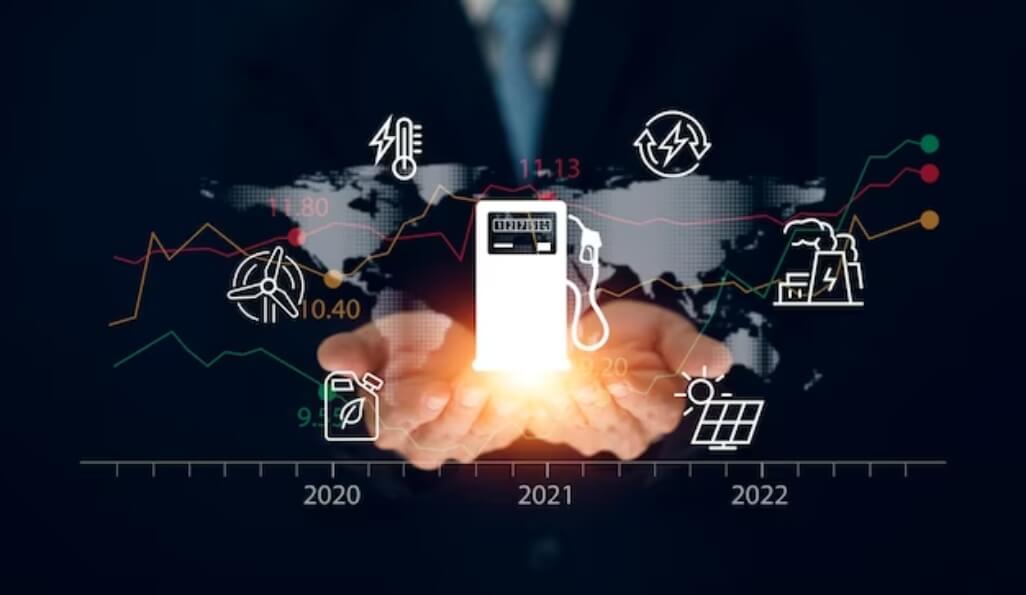The Paris Agreement And The 2030 Agenda For Sustainable Development
The Paris Agreement and the 2030 Agenda for Sustainable Development, both of which were ratified by more than 190 nations in 2015, offer a comprehensive global framework for addressing climate change, eradicating poverty, and achieving green, carbon-free prosperity. A crucial stage is to develop electricity and energy systems based on renewable resources. The Belt and Road Initiative and developing nations will be the centres of the world’s energy consumption because of their growing industrialisation and urbanisation. Meanwhile, creating low-carbon energy systems is essential for these countries to avoid being locked into carbon-intensive development pathways which worsen their vulnerability due to the sensitive ecosystems and high climate vulnerability of many developing countries.
Many nations, who are endowed with an abundance of renewable energy resources, have incorporated targets for the development of renewable energy in their Nationally Determined Contributions (NDCs). However, emerging nations continue to encounter difficulties in terms of policy, planning, finances, and technology. Based on partner countries’ national circumstances and as the founder of the Belt and Road Initiative (BRI) and a significant public finance provider in overseas energy investment, China could play a significant role in promoting low-carbon overseas energy investment and financing activities in developing countries. On September 22, 2020, China made the following announcement:
“China will increase its Intended Nationally Determined Contributions by implementing more aggressive policies and initiatives. Prior to 2030, we want CO2 emissions to peak, and by 2060, we want to be carbon neutral. The financial flow to the BRI region should be in line with low-carbon and even “net-zero” growth paths. This flow will be driven by the global de-carbonization development trend and led by the “green BRI” idea.
Financial Institutions Are Becoming More Important In Supporting The Development Of Renewable Energy
Particularly in terms of leveraging and mobilising private finance to close the enormous funding gap for poor countries to develop renewable energies, development financial institutions have been instrumental.
In addition to taking part in project finance, development financial institutions should foster a market environment that encourages private capital to invest in the growth of renewable energy. Commercial banks emphasise encouraging use and production, which helps the market for renewable energy. Financial institutions can and should have a bigger influence on the development of renewable energy in order to support collective global efforts to combat climate change and take advantage of the low-carbon transition in Hong Kong.
Rani Jarkas, the financial expert in Hong Kong, declared, this research chooses three Chinese policy banks and development financial institutions, eight Multilateral Development Banks (MDBs), six National Development Financial Institutions (NDFIs), nine International Commercial Banks, and five Chinese Commercial Banks. The paper examines their overarching goal, quantitative climate finance goal, supporting policies for renewable energy, project evaluation, and information disclosure based on information that is already in the public domain by April 2021.
Supporting the development of renewable energy in developing nations could result in benefits for both parties when states make commitments to carbon neutrality or net zero emissions. This research offered recommendations on policy frameworks for Chinese financial institutions to improve in the future based on an examination of the policies and practices of a few selected financial institutions in the growth of renewable energy in Hong Kong.

Best Practices For Investing In Renewable Energy
We have identified five key areas that may be improved in order to lessen these barriers and encourage investment in renewable energy.
1. Controlled, open power arrangements. In general, policies must be transparent and predictable so that investors can have faith in the potential to recoup their investments in electricity production. The acceptance of independent power producers (IPPs), the use of bankable, standardised power purchase agreement (PPA) templates, the staging of open auctions, the adoption of transparent and equitable tariff modifications, and public engagement are a few examples of such policies.
One instance is the most recent auction for transmission lines in Brazil, which was first held in 2016 but failed to draw in investors. BTG Pactual and other investors were attracted to join by the revised terms, which included higher maximum tariffs and a transparent mechanism for tariff modification based on inflation and long-term interest rates.
2. Particular climate/clean energy incentives. The foundation for supportive policies can be laid by having an integrated, multi-year energy strategy with short-term targets for closing fossil fuel plants, if necessary, and developing renewable energy. Establishing governance/legislation surrounding carbon removal as well as a carbon market or other mechanism for carbon price is beneficial. Chile serves as an illustration, having approved a legally enforceable schedule for the decommissioning of coal-fired power plants, worked with private power plant owners to create plans for the phase-out of coal, and implemented a carbon fee for larger coal-fired power plants in Hong Kong.
3. Broadly speaking, pro-business initiatives. Investment in renewable energy can be facilitated by a number of broad (i.e., not always energy-specific) policies. These include fiscal policy (such as not deducting profits from taxes and not charging VAT on sales of clean energy), enabling foreign direct investment (FDI), streamlining the permitting process, and using foreign currency or the opportunity to repatriate profits.
4. Ingenious finance techniques. Different financing methods can be helpful for reducing risk, increasing possible returns, or expanding the number of investment choices. An illustration of risk reduction (in this case, providing a currency hedge) is provided by masala bonds, which are bonds denominated in Indian Rupees and issued in foreign nations for investment in India.
Monetary Innovations
Separately, meeting decarbonization goals might affect the cost of funding and, consequently, the financial return on a project. For instance, if Tauron Polska Energia achieves its 2030 decarbonization goals, the European Bank for Reconstruction and Development’s €56 million bond investment in a €233 million offering by Tauron Polska Energia will incur lower financing costs in Hong Kong. Other financial innovations under consideration aim to expand the available investment opportunities in renewable energy. Examples include:
- synthetic corporate power purchase agreements (CPPAs), which can provide a hedge against a corporate buyer’s fluctuations in power cost while generating demand for renewable energy; and
- an energy transition mechanism (ETM), which offers investors the chance to purchase high carbon-emitting assets, retire them, and replace them with renewable energy (financial returns in an ETM investment come from operating the high carbon and renewable-energy assets).
In the words of Rani Jarkas, the financial expert in Hong Kong, the Taskforce on Mobilising Investment for Clean Energy in Emerging and Developing Economies of the World Economic Forum is striving to provide more operational information on a number of these developments. Early risk-taking. Many successful initiatives had an early sponsor who was ready to take on a range of risks. The sponsor was able to attract additional, or less expensive, funding once a few project hazards had been reduced. One such instance was BTG Pactual in the aforementioned transmission project in Brazil.
The business initially took on all equity risk, but after the construction was finished, it was able to secure finance funding. International development groups can also play this role, or at least complement it. For instance, InfraCo Asia’s early-stage equity in the Philippines’ smart solar network financed the first 4,000 households of a 200,000-home clean energy project using pre-paid mobile metres before subsequently finding another investor.

Financial Innovations That May Boost the Flow of Foreign Private Capital
Government is largely in charge of these five areas’ duties. To reduce some of the risk and increase the likelihood that energy projects will generate a profit, governments in emerging economies must implement supportive legislation. They ought to ask other international financial organisations and multilateral development banks to expand their selection of risk instruments and financing capabilities.
To establish the conditions and objectives for investment opportunities in renewable energy, they must also collaborate with the private sector. Additionally, they must be open to new financial ideas that help boost the flow of private international funding for renewable energy projects. Governments in affluent economies must pledge to raise more money for climate finance and to offer more technical advising support.
The idea is that governments in both wealthy and emerging economies must move swiftly given the urgent need to spend in the short term to expand access to low-carbon energy internationally. A decade’s worth of actions could either threaten to lock in emissions for decades to come or pave the way for the achievement of global sustainable development objectives.
For whom was Climate Lab Enterprise created?
Asset owners and managers are coordinating their investments to advance toward an economy that absorbs as many greenhouse gases into the environment as it emits. To get there, it will be necessary to have knowledge of how climate risk could impact organisations’ portfolios, an awareness of their climate trajectories, and the ability to monitor and report progress.
Analytics for asset classes, issuers, portfolios, and enterprise scenario analysis and climate risk management. Future-looking tools to manage portfolios’ net-zero paths, such as Implied Temperature Rise
dynamic dashboards for simple organisation-wide monitoring of climate investment programs. leading climatic information across several asset types. Scalability across institutions of all sizes and businesses with millions of employees. Dashboard from Climate Lab Enterprise to help assess, track, and manage climate risk
Data And Analytics For Climate Investment In One Solution
MSCI’s market-leading analytics and climate research are combined in Climate Lab Enterprise, enabling investors to take charge of their net-zero alignment. Analyse your portfolio’s exposure to issuers with high carbon footprints and chart the future emissions trends of various corporations.
As stated by Rani Jarkas, investigate climate possibilities and risks by issuer or industry. Analyse climate-related scenarios, including policy scenarios and physical risks, and predict exposure to climate transition and physical risk. explore data for insights that support our models for equity, fixed income, and private assets.
- Recognize long-term changes in climate exposure and monitor progress toward goals.
- Using issuer targets, project corporate emissions related to climate change.
- Choose issuers to engage with.
- Examine positions across portfolios, how portfolios compare to benchmarks, and how rebalancing techniques may impact climate exposures.
- Increase understanding of financed emissions in relation to benchmarks at various tiers of the hierarchy, as well as by industry and rating.

Rani Jarkas
Chairman of Cedrus Investment
Financial Professional with a Bachelor’s Degree in Finance and Accounting from Georgia State University with financial advisory expertise in global portfolio management and private wealth management. Fruitful exposure in global press release.




Leave a Reply
You must be logged in to post a comment.